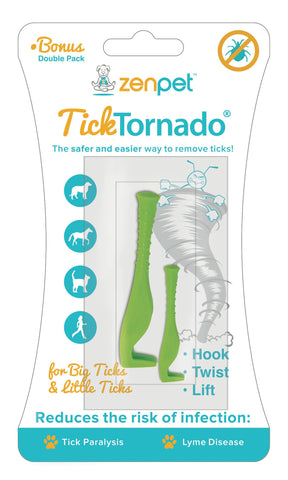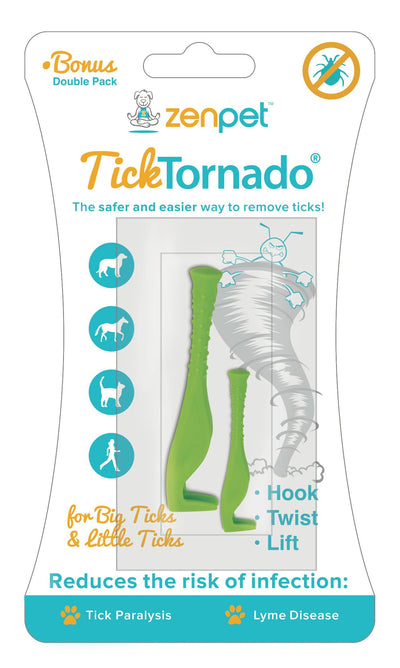 As a dog owner, there are some basics you should know about the risks, prevention and removal of ticks. With proper knowledge, you can help protect your dog from the threat of ticks.
As a dog owner, there are some basics you should know about the risks, prevention and removal of ticks. With proper knowledge, you can help protect your dog from the threat of ticks.Ticks are parasitic arthropods that feed on the blood of their hosts. They are attracted to warmth and motion, often seeking out mammals – including dogs. Ticks tend to hide out in tall grass or plants in wooded areas waiting for prospective hosts. Once a host is found, the tick climbs on and attaches its mouthparts into the skin, beginning the blood meal. Once locked in place, the tick will not detach until its meal is complete. It may continue to feed for several hours to days, depending on the type of tick. On dogs, ticks often attach themselves in crevices and/or areas with little to no hair – typically in and around the ears, the areas where the insides of the legs meet the body, between the toes, and within skin folds. Most species of ticks go through four life stages - eggs, larvae, nymphs, and adults. All stages beyond eggs will attach to a host for a blood meal (and must do so on order to mature). Depending on species, the life span of a tick can be several months to years, and female adults can lay hundreds to thousands of eggs at a time.
Ticks seen in North America:
- Deer tick
- Brown dog tick
- Lone star tick
- American dog tick
Though they are known vectors of disease, not all ticks transmit disease – in fact, many ticks do not even carry diseases. However, the threat of disease is always present where ticks are concerned, and these risks should always be taken seriously. Most tick-borne diseases will take several hours to transmit to a host, so the sooner a tick is located and removed, the lower the risk of disease. The symptoms of most tick-borne diseases include fever and lethargy, though some can also cause weakness, lameness, joint swelling and/or anemia. Signs may take days, weeks or months to appear. Some ticks can cause a temporary condition called “tick paralysis,” which is manifested by a gradual onset of difficulty walking that may develop into paralysis. These signs typically begin to resolve after tick is removed. If you notice these or any other signs of illness in your dog, contact your veterinarian as soon as possible so that proper testing and necessary treatments can begin.
Most common tick-borne diseases:
- Lyme disease
- Ehrlichiosis
- Rocky Mountain spotted fever
- Anaplasmosis
- Babesiosis
Invented and designed by a French veterinarian in the 1990's in two sizes, one for removing very small and small ticks and one for removing medium and large ticks. They are made of injected plastic (polyoxymethylene=POM). This polymer plastic was chosen because it is recyclable, can be incinerated without pollution (no chlorine fumes during combustion) and for its solidity and resistance to ether and most solvents. Tick Twister® can be disinfected with regular disinfectants (alcohol is one example) or they can be sterilized in an autoclave at 284 degrees F (140 degrees C). Tick Twister® is unbreakable, hard-wearing and indefinitely reusable and carries a Life Time guarantee:
Caution: Although tick removal with Tick Twister® minimizes risks, it doesn't guarantee that you (or your pet) haven't been contaminated by tick-borne micro organisms: this contamination may have occurred before the removal.















Leave a comment